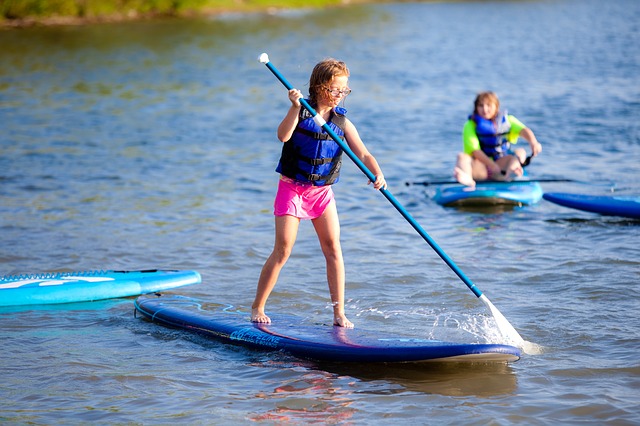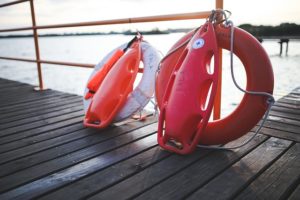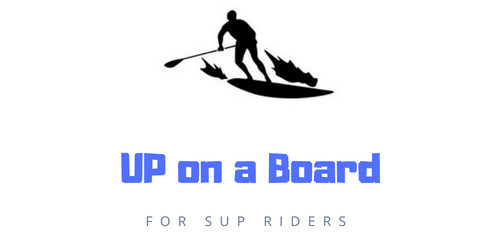Beginner’s Guide for Paddle Board Safety

Paddleboarding may seem like a harmless activity, but as with all water-based activities, there are some safety measures that should be taken. Beginners should have a basic understanding of the proper equipment, rules, and precautions for paddle board safety.
Can paddle boarding be dangerous? Paddleboarding is a water activity, which comes with the potential for hazardous activity. Without taking proper safety precautions, then it can be potentially dangerous to be out on a paddle board. Let’s take a look at some of the ways to ensure that we are maintaining proper safety standards for paddle boarding.
What are the safety requirements for paddle boarding?
The US Coast Guard has classified a paddle board as a vessel similar to a canoe or kayak.
With that being said, the safety equipment required for kayaks or canoes is the same that is required for a paddle board.
Some exceptions are made depending on where you are using your paddle board.
For example, if in a designated area for swimming or surfing, you are ok without a U.S. Coast Guard approved life jacket.
Otherwise, a USCG approved life jacket is required and you may be sanctioned with a fine without one.
Some requirements state that it is necessary to have a “sound producing device” which could be a horn or whistle for other watercraft to hear.
If on a paddle board at night, some sort of lighting devices like a flashlight or lantern needs to be available to forewarn any approaching watercraft.
Using a Life Vest
Just like wearing a seat belt, wearing life vests or jackets are proven to save lives.
It may seem like an inconvenience or you make think if you go without it once nothing will happen, but you just never know when something could happen.
In the past, life vests tended to be bulky, but are now better designed to fit like a jacket.
A life jacket tends to be filled with a light foam based material, which can displace large amounts of water allowing for floatation.
It’s important to ensure that your life vest fits snuggly and properly.
All straps should be secure and working. If you are with kids, the kids should be wearing a life jacket that is appropriate for kids.
An adult size jacket for kids will not work, because a child could potentially slide out of the vest.

General Water Safety
When paddleboarding, it is important for the person using the paddle board to have some basic swim skills.
Some bodies of water may not be suitable for less experienced swimmers. If the water is rough, like the ocean tends to be, it could be a major safety concern for those that aren’t strong swimmers.
Rivers can have fast moving currents with shallow depths and rocky areas that can pose safety threats.
The ocean has different obstacles for swimmers like a strong undertow, which beginner paddle boarders need to account for.

Observe your surroundings
Some areas of water can be very dangerous, depending on what’s going on under the visible surface.
Look for signs of rocks, fallen trees, coral, or any other possible visible obstruction that could potentially be hazardous to a paddle boarder.
Be aware of potentially dangerous marine life. The last thing you want is to encounter a real-life Jaws experience with a shark.
There is also other potentially dangerous marine life that can be found like jellyfish, stingrays, eels, or snakes.
Harmful marine life isn’t just limited to the ocean, but all bodies of water.
Overcrowded water or other watercraft. When the water is overly crowded it can pose a threat.
Paddleboarding in an area with lots of swimmers can put others at risk if someone like a small child were to get trapped under your board.
If a water body is crowded with other motorized watercraft they may not see you on your paddle board and could cause injury if they were to run into a paddle boarder.
Water pollutants. Many of the urban small lakes in my area are created with reclaimed water, which can be hazardous to humans.
If it’s not safe to be swimming in the body of water that you intend to paddle board in, then it may be a good idea to reconsider paddle boarding there.
Observe what types of structures are on the water shoreline that may be dumping waste or hazardous materials into the water.
Water temps. Be careful of water temps that are too cold.
Wearing a wetsuit can help keep you warmer. Cold water can cause things like hypothermia and be potentially dangerous.
Weather forecast. Weather can change in the blink of an eye. It’s good practice to view the current weather forecast before going out on the water.
If there are threats of storms, you’re probably better off postponing paddle boarding to another day.
High winds, storms, and lightning can wreak havoc, so if you see a storm on the horizon, get off the water.
Additional Safety Tips
Know how to use your paddle board- You don’t have to be an expert to paddle board, but watching some videos, reading tips online, or being taught by an experienced paddle boarder will help you to feel safe on your board.
Let others know where you are- It’s potentially dangerous to be out on the water by yourself when no one knows you are at there.
It’s best to go with someone else, so you always have some help if needed.
Equipment- Have a basic understanding of your paddle board and equipment. A solid surface board could cause harm if you hit your head on it or some of the fins on the board could injure if landed on.
Wearing an ankle leash will help with keeping the board near you if you fall off, so the board doesn’t float away. Your paddle board can help keep you afloat.
Sun Safety- When you are exposed to sun rays for long periods of time can be harmful to the skin by causing burns or other issues.
Ensuring that you are utilizing proper sun protection, like sunscreen, can help alleviate potential harm from the sun.
Weight Requirements- Paddle boards can only hold so much weight.
Check the specs of your board when purchasing to get an idea of what you can hold. Keep that in mind when riding with your dog or children.
Stay in bounds- If you’re a beginner, it can be a good idea to stay in the swim area or an area monitored by a lifeguard.
Wait until you feel more comfortable on your paddle board before venturing out of the designated areas.

Know how to respond- It can be beneficial to take a course on CPR just to be prepared in emergency situations, should something ever occur.
I’m not saying you need to be CPR certified to ride a paddle board, but just something that could be beneficial for any safety situation.
Ditch the Alcohol- Since a paddle board is considered a vessel that you operate, anything that impairs your judgment like alcohol or drugs should be refrained from when using a SUP.
Know your limits- If you aren’t in the best physical shape or have various medical conditions, paddling for long distances may take a toll on your body, so know what you are physically able to handle.
Ensure that you are getting proper hydration and fuel for your body.
In conclusion, if you are following these guidelines and just being aware while paddle boarding, it’s a relatively safe experience.
Paddleboarding is a blast and this article isn’t intended to scare or ruin the experience, but just to enlighten the beginner paddle boarder on tips to create a safe experience.
Please comment below on anything that you enjoyed from this post.

